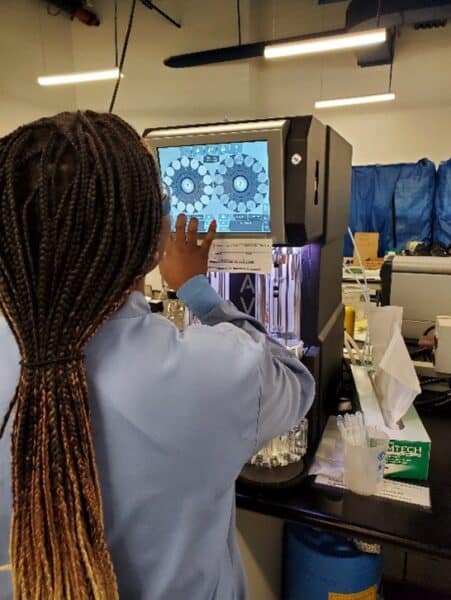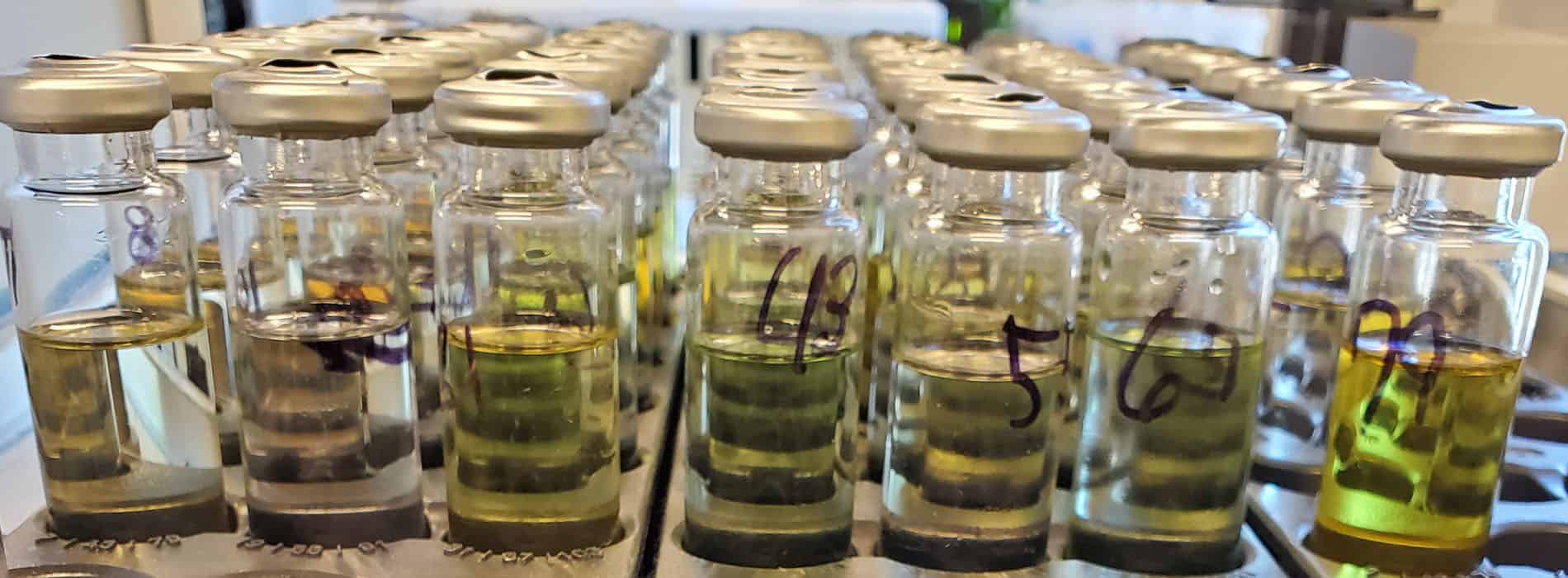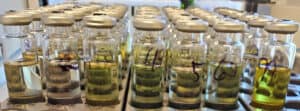Behind the Scenes: Exploring the central role oil laboratory testing can play in monitoring the health of your electrical assets
To many of us who work in the power industry the workings of the oil testing laboratory we send oil samples to from our transformers, cables, and bushings, etc. is a bit of a mystery: we dispatch the samples and sometime later the results are returned. These data are of critical value and many important safety and financial decisions are made on the outcome of the oil testing. My colleague Melissa Carmine-Zajac recently published a paper in the IEEE Electrical Insulation Magazine (EIM) explaining what happens between your sample arriving at the oil laboratory and the final report being sent out: I found it insightful, I hope you do to.
In the EIM article Melissa explores the methods and best practices an oil testing lab should conduct, along with some of the challenges and issues it may encounter in a typical day. I have summarized them below and recommend you read the full article.
The Importance of Sampling
In order to achieve good results, it’s important to obtain an oil sample that is representative of the bulk liquid inside of the apparatus being tested. Poor sampling techniques and inappropriate containers can lead to contamination of the sample and may result in inaccurate test results. Using a particle free, light block, glass or metal container is the best choice for maintaining the sample during shipping and storage prior to testing.
The Process of Sample Receiving
On any given day, an oil lab can receive dozens or even hundreds of samples, therefore it’s important to process them in an orderly, methodical manner. Most laboratories utilize a Laboratory Information Management System (LIMS) to achieve this. It can track samples, manage test data, and issue reports. Each sample’s detailed entry should include asset nameplate information, sampling information, tests required, and its priority status which can be ‘routine’ or ‘rush’ depending on the urgency of the job.
Sample Storage Before Testing
Since the environmental conditions in the storage area and lab space—such as direct sunlight, temperature, and humidity—can have a negative impact on the samples, it is crucial to maintain a controlled environment that keeps these variables within set limits.
The Quality Processes that Underpin a Good Oil Laboratory
Asset owners make critical safety and financial decisions based on the accuracy of test results they get from an oil testing provider. Quality control measures need to be in place from the moment the samples arrive at the lab until the results are returned to guarantee accurate and precise results.
The internationally recognized standard—ISO 17025—is a much sought-after quality accreditation for testing and calibration laboratories that enables them to demonstrate their competence, reliability and accuracy.
The Analytical Instruments Used and Importance of Calibration
All equipment used to produce customer data should be calibrated and qualified daily using standard reference materials and other quality control checks. Each workday begins with running these quality control standards to determine if the equipment is operating properly and capable of generating accurate data. If an instrument does not pass quality control checks, the instrument must be taken out of service until the problem has been assessed and remedied.

Staff Training
Having a highly trained and competent staff is just as critical to the quality of data. Every lab employee should be thoroughly trained and monitored before they are authorized to perform testing independently. This ensures that methods and procedures are being followed and thus reduces the risk of human error.
Environmental Considerations at the Laboratory
As with all precise scientific measurements the environmental conditions in the laboratory need to be controlled in a manner that does not jeopardize the integrity of, or invalidate, the test results. Temperature, humidity, and barometric pressure are three parameters that need monitoring as they can all have an impact on certain tests: weather stations positioned in key areas of the lab are a good solution.
Documents and Record Keeping
Laboratories produce a lot of test data and other technical records. Thoroughly documenting and storing test data and reports, instrument calibration records, Non-Conformance Reports (NCR) and Corrective and Preventive Actions (CAPA) reports, as well as staff records is a vital part of any laboratory quality program. All records must be stored in a manner that is secure, protected against network/database failures and allows for data to remain confidential.
Types of Testing Performed
Some labs may offer well over 100 tests but fundamentally oil testing can be divided into two basic categories:
- Routine tests are performed on oil samples taken on a regular basis (typically every to 1 to 5 years depending on the asset type). These tests include Dissolved Gas Analysis (DGA), oil quality, tests to assess the condition of the paper insulation, additives, and corrosive sulfur. Combined these tests provide a high-level indication of the asset’s health.
- Specialty tests are performed for specific purposes often to elucidate unusual findings from routine tests or following concerns about the health of an asset. Such tests include oil contamination identification, oxidation stability testing, material compatibility, elemental analysis, pilot clay treatment and forensic/failure mode investigations
Reporting Results to the Client
Electric equipment diagnostics can be a complex science, especially in the case of DGA, with so many factors to consider. Although IEEE and IEC guides, and software tools can help with the data interpretation, it’s important that an analyst reviews the data as even the most sophisticated software tools can miss subtle trends and other details important to the final diagnosis.
The report issued by the lab should contain all the test data along with diagnostic comments and expert opinions regarding the condition of the asset and next steps to be taken, if any.
Conclusion
As this brief review shows the process to obtaining accurate oil laboratory results requires many administrative, technical and managerial steps, as well as field personnel, laboratory technicians and chemists to collect, analyze and ultimately interpret the results. All these steps, along with those who work in the lab, are responsible for ensuring that the delivered results can be trusted. For a more detailed explanation download the EIM article from the link below.
MORE INFORMATION:
- Full-length EIM Article
- Further reading:
- Doble Materials Laboratory











